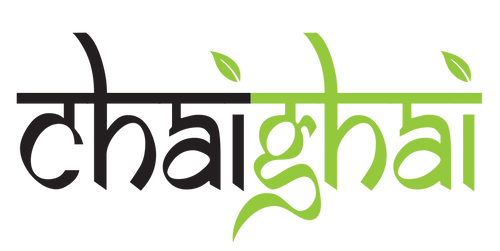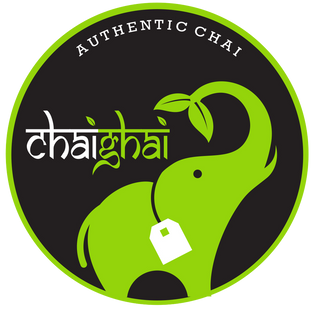“He who has no faith in self, can never have faith in God”
-Guru Nanak Dev Ji

Learning is the forever journey that enriches our soul and expands our consciousness. Enlightened thinking allows us to remain students of the universe constantly growing as a person. When we think about Vaisakhi, we think about the large parades, and delicious food, but here we review three things we don’t necessarily think about. When learning about something ancient, we must push past the superficial to really understand its origins and significance. Vaisakhi, alternatively spelled Baisakhi, occurs this year on April 14th and is an important date for Hindus and Sikhs, as it marks the first harvesting of crops for the year and the birth of Khalsa. The festival celebrated during Vaisakhi, complete with a fair, parade and prayer, helps to set the tone for the new season and for Sikhs to honour the creation of the Khalsa Panth, a key movement in Sikhism. Indians look to center themselves and recharge their 3rd chakra, Manipura, in the solar plexus. The Vaisakhi festival is a day to be connected with the community and for Sikhs to celebrate Khalsa, which is what those who have been baptized into the faith are called. The origin and celebration of Khalsa, which first began in 1699, signified a new chapter in the Sikh religion. Vaisakhi is a joyous day full of celebration along with worship and one of the most colourful and traditional in the Indian Solar and Nanakshahi calendars. The 3 things you didn’t know about Vaisakhi include:
1. What the festival entails
2. Why the day it occurs on is important
3. How its celebration is significant to Indians.
What is Vaisakhi?
While the importance of the harvest along with the celebration of the Khalsa are primary, Vaisakhi extends beyond the crops that are planted and sown to include choices made and actions taken to live a holistically whole life. To exist peacefully in the soul and live well, one must take in sustenance that helps to maintain a healthy mind and body. Rabi, crops that yield during Vaisakhi include wheat and seasonal fruits like mangoes. These crops are vital in Indian cooking and make up such staples as Naan, Roti, Chapatti and desserts like the Mango Lassi. The Vaisakhi festival celebrates using these produce as Indians prepare delicious foods to enjoy with family and friends. Dishes like Kadhi and Meethe Peeley Chawal as well as Kada Prasad and Kesar Phirni are shared. For Sikhs, Vaisakhi means not only getting together with family and friends to enjoy dishes such as Karah Parshad, made using the wheat harvested, but also a devotion to the Khalsa. Vaisakhi denotes the creation of the Khalsa Panth; the path to a form of Sikhism given to Sikhs by Guru Gobind Singh in 1699. By taking the Khalsa, Sikhs show their devotion to their faith in service. During Amrit Sanchar or Khande Di Pahul, the ceremony established in 1699, Amrit; a mixture of sugar and water is taken during prayer to baptize Sikhs with courage, strength and sacrifice. Vaisakhi is a recurrent date for new Sikhs to be baptized and thus become a member of the Khalsa Panth. Khalsa also helped give rise to the turban, which is a familiar visual among many Sikhs, a distinction that Guru Gobid Singh wanted made clear, so all Sikhs were easily identifiable. The turban or keski holds Sikhs Kesh; uncut hair and is one of the 5 symbols that denote a baptized Sikh. Kesh along with 4 significant items, Kangha; a small comb, Kacchara; undergarments, Kara; a steel bracelet and Kirpan; a knife or small sword, represent a Sikhs purity and courage, as well as their dedication to sacrifice and compassion for all. The role that Vaisakhi plays in the Khalsa Panth makes it a significant date for Sikhs as they honour their history and welcome new members to their faith.
Baisakhi 2022- A Major Festival of Hindu and Sikh Community - Edudwar
What Day Does Vaisakhi Happen On?

Vaisakhi includes traditions that date back for centuries and it falls on April 14th this year. This is usually the case each year, though the festival sometimes occurs on April 13th, with it also being held on April 15th, such as last year, once every 36 years. This date is determined by the Solar calendar and according to the Nanakshahi calendar, which is used worldwide by Sikhs and named after the founder of Sikhism, Guru Nanak Dev Ji, this date indicates the sun entering Mesha Rasi from Vaisakha, which are two months in the Indian Solar calendar. This event called Mesha Sankranti, happens on the first day of the month Vaisakh in the Nanakshahi calendar. Vaisakhi is a central holiday in Indian culture that includes a festival, as well as a parade, called Nagar Kirtan, to commemorate cooperation through strong relationships and frequently attracts hundreds of thousands of participants. It is also an important time for seva, as participants look to help those in need. Donations called daan are often made which include fruits to represent the harvest. Traditional water pitchers and hand fans are also given to symbolize and promote equality and empathy within the community. The Vaisakhi festival encourages these values and helps those who celebrate it reflect upon and within themselves as well as they can help their community.
What Does Vaisakhi Symbolize to Indians?
The meaning of Vaisakhi to Hindus and Sikhs plays a significant role in setting them up for a prosperous year. The values that are practiced during Vaisakhi including seva, daan, fairness and togetherness, reverberate beyond the festival into how people treat each other in their daily lives. This is evident in the rituals that occur during Vaisakhi that help promote community, including visiting temple and bathing in sacred waters. Vaisakhi also plays an extremely significant role in Indian history, most famously in events that happened on April 13th in the years 1801 and 1919. In 1801 Ranjit Singh was named Maharaja of the Sikh or Punjab Empire unifying the state and in 1919 the Jallianwala Bagh massacre took place during a peaceful protest. These events both helped shape unity and independence in India and played a large role in the country it has now become. Vaisakhi symbolizes these values including justice and celebrates them in the hopes of an ample harvest to cultivate the mind and body and help the soul fly free. The significance of the sun to Vaisakhi includes the importance that it plays in aiding crops to grow abundantly and also helping to center Manipura, the 3rd chakra located in the upper stomach between our diaphragm and navel. This is the center of power within our body and helps us to stay strong and balanced no matter what we face in life. It is also closely associated with yellow and fire, which helps to form our sense of self, including our personal identity and the choices we make to authenticate it. The Vaisakhi festival honours the sun and helps to foster our sense of personal growth as we celebrate with those closest to us. It is so much more than a parade, it’s a celebration of life, and how it is lived.
So what is Vaisakhi in Canada all about? - worldsikh2
“He alone is a man who keeps his word: not that he has one thing in the heart, and another on the tongue.”
-Guru Gobind Singh

People come together during the Vaisakhi festival to celebrate family, friendships and community. They participate in acts of seva and daan and help lift one another up; to live with justice. Vaisakhi holds an essential role to Hindus and Sikhs socially, spiritually and politically. It is a time that indicates the beginning of the Khalsa Panth, when the Sikh religion took its final shape. The values, such as devotion taken from the Khalsa and shared among friends and families during Vaisakhi remind those who celebrate it what is important in life. With a parade, fair and visits to temple where ceremonies of Amrit or Pahul can be taken, Vaisakhi helps people feel a sense of camaraderie within their community. The significant social, spiritual and political events that have taken place during Vaisakhi remain vital to Indian history and the incidents that happened work as a reminder of what it means to pursue equality as a society. Vaisakhi is a time to celebrate the harvest that has been made bountiful by the sun’s rays. It also acts as a springboard for community relations, tradition and trust that help to promote personal growth, clear chakras and get in touch with what the Khalsa Panth practices. In honour of this ancient celebration we are offering 40% OFF your entire order for a limited time. So have an authentic Indian Vaisakhi this year. All Products – Chai Ghai





